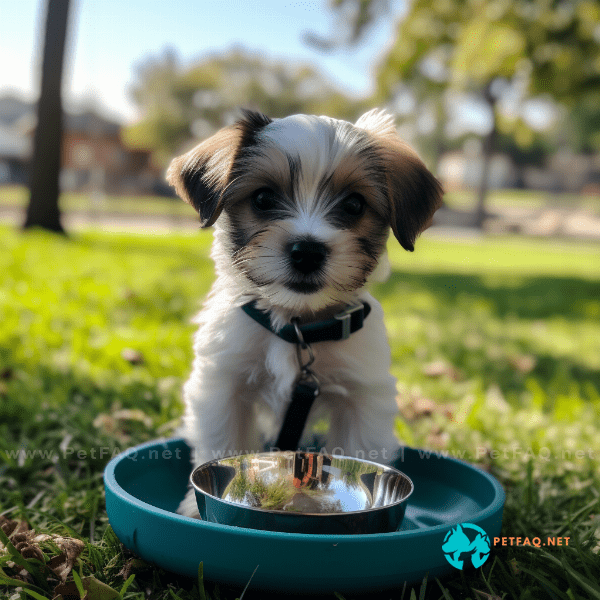Table of Contents
- The Benefits of Crate Training for Puppies
- Choosing the Right Crate for Your Puppy
- Introducing Your Puppy to the Crate: Tips and Tricks
- Establishing a Positive Association with the Crate
- Setting a Crate Training Schedule for Your Puppy
- Gradually Increasing Crate Time: Dos and Don’ts
- Common Crate Training Challenges and How to Overcome Them
- Using Positive Reinforcement to Encourage Good Crate Behavior
- Crate Training Tips for Puppies with Separation Anxiety
- When to Gradually Phase Out the Crate: Transitioning to a New Sleeping Arrangement
The Benefits of Crate Training for Puppies
Crate training is an excellent way to train your puppy, and there are several benefits to it. One of the main benefits of crate training for puppies is that it helps to establish a sense of security and a comfortable space for them. A crate serves as a personal space for your puppy, providing them with a place to rest, play, and relax.
Crate training also aids in potty training your puppy. Dogs have a natural instinct to keep their living space clean, and a crate can help to reinforce this instinct. By keeping your puppy in a crate, you can regulate their eating and sleeping schedule, and this can help to prevent accidents around the house.
Crate training can also help to prevent destructive behavior in puppies. When left unsupervised, puppies may chew on shoes, furniture, or anything else they can get their teeth on. Keeping them in a crate while you are away can help to prevent this behavior and protect your home.
Lastly, crate training can help to make travel and vet visits less stressful for your puppy. If your puppy is accustomed to being in a crate, they will be more comfortable during car rides or while at the vet’s office. Overall, crate training is an effective and beneficial way to train your puppy and help them adjust to life with their human family.
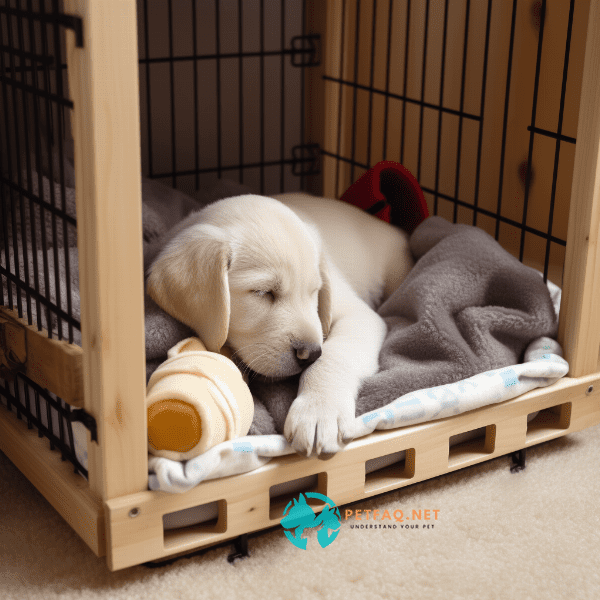
Choosing the Right Crate for Your Puppy
Choosing the right crate for your puppy is an important part of crate training. There are several factors to consider when selecting a crate for your puppy, including size, material, and design.
Size is perhaps the most important factor to consider when choosing a crate for your puppy. The crate should be large enough for your puppy to stand up, turn around, and lie down comfortably, but not so large that they can use one corner as a bathroom and the other as a sleeping area. The crate should also be big enough to accommodate your puppy as they grow, but not too big that it feels overwhelming.
Material is another crucial consideration when selecting a crate for your puppy. You can choose from plastic, wire, or fabric crates, depending on your preference and your puppy’s needs. Plastic crates are easy to clean and provide more privacy for your puppy, while wire crates offer better ventilation and visibility. Fabric crates are lightweight and easy to transport but are less durable than plastic or wire.
Lastly, consider the design of the crate. Some crates come with dividers, which can be useful for adjusting the size of the crate as your puppy grows. Other crates have removable trays, making them easier to clean. Also, consider the type of door and locking mechanism, ensuring your puppy cannot escape.
Choosing the right crate for your puppy is crucial for a successful crate training experience. By selecting a crate that fits your puppy’s size, material preference, and design requirements, you will help ensure your puppy’s comfort and safety while training.
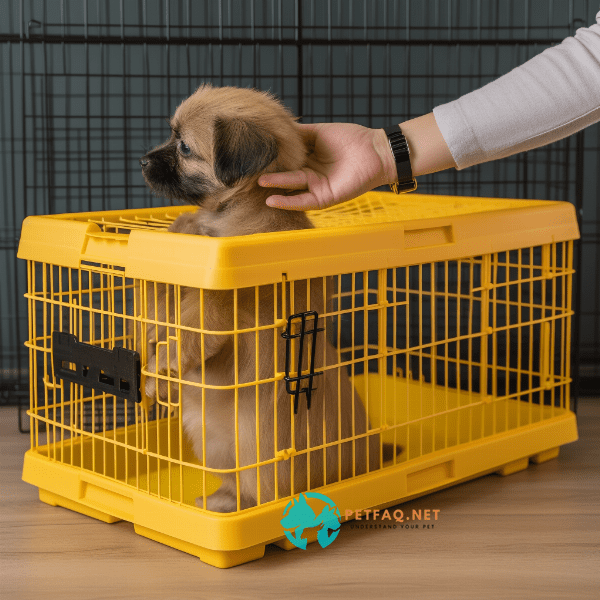
Introducing Your Puppy to the Crate: Tips and Tricks
Introducing your puppy to the crate can be a challenging experience, especially if they have never been in one before. However, with the right approach, you can make the process much easier and more comfortable for your furry friend. Here are some tips and tricks to help you introduce your puppy to the crate successfully.
First, start by introducing your puppy to the crate gradually. Leave the crate door open and place a soft blanket or bed inside the crate to make it comfortable. Encourage your puppy to explore the crate on their own by placing treats or toys inside it.
Once your puppy is comfortable with the crate, start feeding them their meals inside it, with the door open. This will help your puppy associate the crate with positive experiences.
Next, start closing the door of the crate for short periods, increasing the time gradually as your puppy gets more comfortable. Ensure you’re within earshot, so they don’t feel abandoned.
If your puppy becomes anxious or distressed when you close the door, try leaving a toy or treat for them to enjoy inside the crate. You can also cover the crate with a blanket to make it feel more like a den.
Finally, never force your puppy into the crate or use it as a form of punishment. The crate should be a comfortable and positive space for your puppy, so be patient and let them adjust at their own pace.
Introducing your puppy to the crate can take time, but by using these tips and tricks, you can make the process more comfortable for your furry friend and set them up for success with crate training.
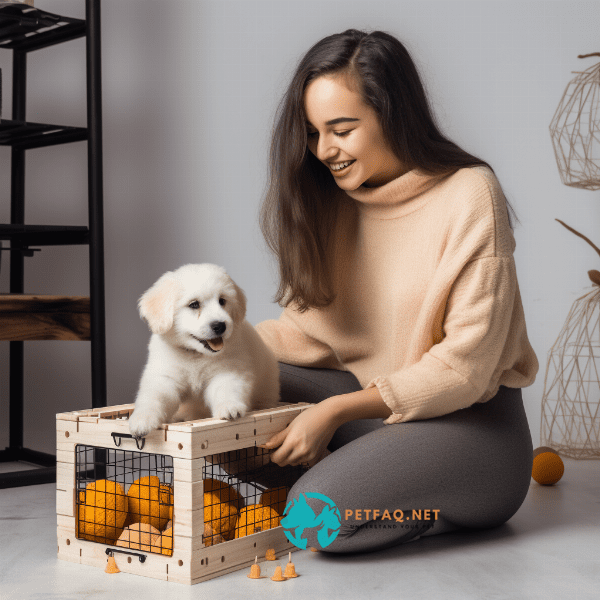
Establishing a Positive Association with the Crate
Establishing a positive association with the crate is crucial for successful puppy crate training. You want your puppy to view the crate as a safe and comfortable place to be, rather than a place of punishment or isolation. Here are some tips for establishing a positive association with the crate.
First, use positive reinforcement to encourage your puppy to enter the crate. Reward them with treats or praise whenever they enter the crate voluntarily. This will help them associate the crate with positive experiences.
Second, create a comfortable and inviting environment inside the crate. Use soft blankets or bedding, and add toys or chews for your puppy to enjoy. You can even leave an article of your clothing, so your scent remains with them.
Third, make the crate a regular part of your puppy’s routine. Encourage your puppy to spend time in the crate during the day while you’re at home. This will help your puppy feel comfortable in the crate and associate it with normal, everyday activities.
Establishing a positive association with the crate takes time and patience, but it’s crucial for successful puppy crate training. By using positive reinforcement, creating a comfortable environment, and making the crate a regular part of your puppy’s routine, you can help your puppy view the crate as a safe and comfortable space to be.
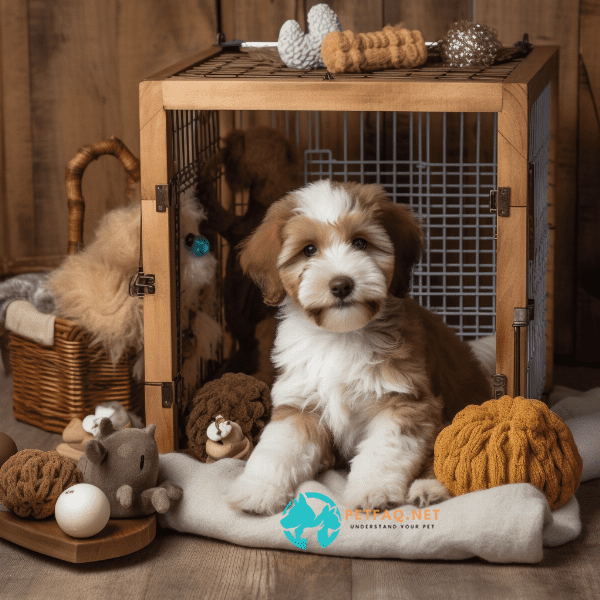
Setting a Crate Training Schedule for Your Puppy
Setting a crate training schedule for your puppy is essential to establish routine and consistency. It also helps your puppy to adjust to the crate and develop good habits. Here are some tips for setting a crate training schedule for your puppy.
First, start by introducing your puppy to the crate gradually. Allow your puppy to explore the crate with the door open and provide plenty of positive reinforcement. Gradually increase the amount of time your puppy spends inside the crate, starting with a few minutes and increasing to several hours a day.
Second, establish a routine for your puppy. Puppies thrive on consistency, so create a schedule that includes regular meal times, playtime, and potty breaks. This will help your puppy learn when to expect certain activities and when it’s time to go into the crate.
Third, avoid leaving your puppy in the crate for extended periods. Puppies need plenty of exercise and socialization, so be sure to give them plenty of time outside the crate for play and interaction.
Finally, be patient with your puppy and remember that crate training takes time. Don’t rush the process, and never use the crate as a form of punishment. The goal is to create a positive association with the crate and to establish good habits that will last a lifetime.
In summary, setting a crate training schedule for your puppy is essential for a successful crate training experience. By introducing your puppy to the crate gradually, establishing a routine, and being patient, you can help your puppy develop good habits and feel comfortable in their crate.
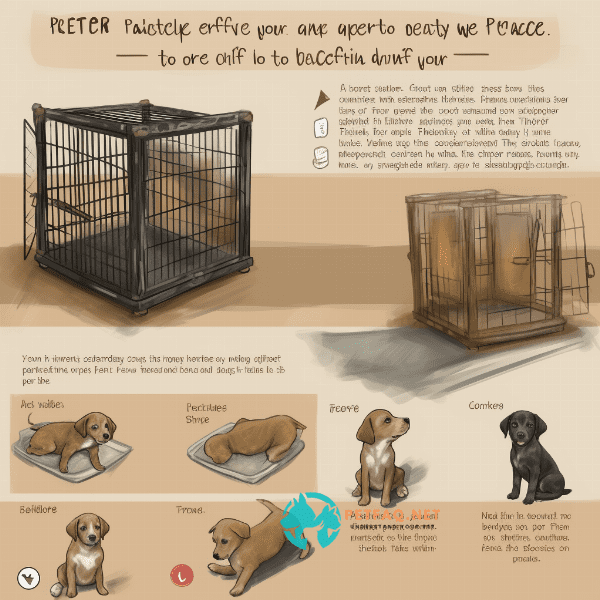
Gradually Increasing Crate Time: Dos and Don’ts
Gradually increasing crate time is an essential aspect of puppy crate training. However, it’s important to do it correctly to avoid creating a negative association with the crate. Here are some dos and don’ts for gradually increasing crate time.
Do start slowly. Begin by leaving your puppy in the crate for short periods, gradually increasing the time as they become more comfortable. This will help your puppy adjust to the crate and prevent them from feeling anxious or stressed.
Don’t leave your puppy in the crate for too long. Puppies need plenty of exercise, socialization, and interaction, so be sure to give them plenty of time outside the crate. A general rule of thumb is that puppies should not be left in a crate for more than four hours at a time.
Do make the crate a comfortable and inviting space. Use soft bedding, provide toys and chews, and consider leaving an article of clothing with your scent on it. This will help your puppy feel more comfortable and content in the crate.
Don’t use the crate as a form of punishment. This will create a negative association with the crate and make crate training more challenging. Instead, use positive reinforcement to encourage good behavior and reward your puppy when they do well.
Do be patient with your puppy. Crate training takes time and patience, so don’t rush the process. Every puppy is different, and some may take longer to adjust to the crate than others.
By following these dos and don’ts, you can gradually increase crate time for your puppy in a positive and effective way. Remember to be patient, use positive reinforcement, and make the crate a comfortable and inviting space. With time and consistency, your puppy will learn to love their crate and develop good habits that will last a lifetime.

Common Crate Training Challenges and How to Overcome Them
Crate training a puppy can be a challenging process, and it’s not uncommon to encounter some difficulties along the way. Here are some common crate training challenges and how to overcome them.
1. Whining and crying: It’s not uncommon for puppies to whine or cry when first introduced to the crate. This is often a sign of anxiety or fear. To overcome this challenge, start by introducing your puppy to the crate gradually, using positive reinforcement to encourage them to go inside. You can also try leaving a treat or toy inside the crate to make it a more inviting space.
2. Chewing and destroying the crate: Puppies have a natural tendency to chew and explore their surroundings, which can sometimes lead to them chewing on the crate. To overcome this challenge, provide plenty of chew toys and treats to keep your puppy occupied. You can also consider using a crate cover or a deterrent spray to discourage chewing.
3. Accidents inside the crate: Puppies may have accidents inside the crate, especially if they’re left inside for too long. To overcome this challenge, ensure that your puppy has plenty of opportunities to go potty before being placed in the crate. You can also use a crate divider to limit the amount of space your puppy has inside the crate, which can help discourage accidents.
4. Refusal to enter the crate: Some puppies may refuse to enter the crate, which can make crate training a challenge. To overcome this challenge, use positive reinforcement to encourage your puppy to enter the crate. You can also try feeding your puppy their meals inside the crate to make it a more positive and inviting space.
By understanding these common crate training challenges and how to overcome them, you can make the crate training process easier and more effective for both you and your puppy. Remember to be patient, consistent, and use positive reinforcement to encourage good behavior. With time and practice, your puppy will learn to love their crate and develop good habits that will last a lifetime.
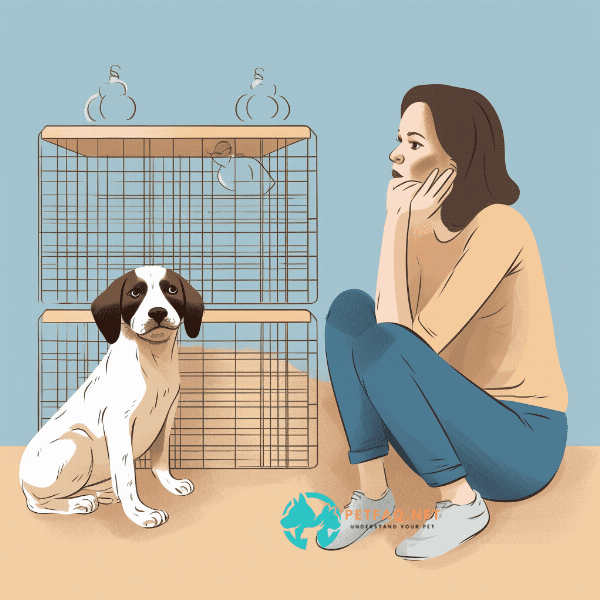
Using Positive Reinforcement to Encourage Good Crate Behavior
Positive reinforcement is an effective training technique that can be used to encourage good crate behavior in puppies. This involves rewarding your puppy for good behavior, such as going into the crate willingly, remaining calm while inside, and not whining or barking.
One effective way to use positive reinforcement is to provide your puppy with treats or toys when they exhibit good crate behavior. For example, when your puppy goes into the crate willingly, reward them with a small treat or a favorite toy. This will help to reinforce the idea that going into the crate is a positive and rewarding experience.
Another way to use positive reinforcement is to offer verbal praise and affection. When your puppy exhibits good crate behavior, such as remaining calm and quiet while inside, offer verbal praise and petting to show your approval.
It’s important to note that positive reinforcement should be used consistently and immediately after good behavior is exhibited. This will help your puppy to associate the reward with the specific behavior, and encourage them to continue exhibiting good crate behavior in the future.
By using positive reinforcement to encourage good crate behavior, you can make the crate a comfortable and inviting space for your puppy. This will not only make crate training easier, but it will also help your puppy to feel safe and secure in their crate, which is important for their overall well-being.
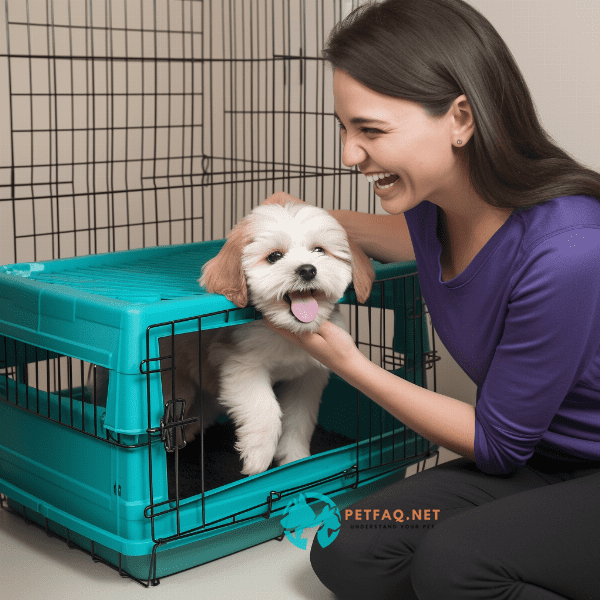
Crate Training Tips for Puppies with Separation Anxiety
Crate training can be particularly challenging for puppies with separation anxiety, as being separated from their owner can trigger feelings of fear and distress. However, with patience and the right approach, it’s still possible to crate train a puppy with separation anxiety. Here are some crate training tips for puppies with separation anxiety:
1. Gradual desensitization: Gradually introduce your puppy to the crate by leaving the door open and allowing them to explore the crate on their own terms. Once your puppy is comfortable being inside the crate with the door open, gradually close the door for short periods of time while you’re in the room with them. Over time, gradually increase the amount of time your puppy spends inside the crate with the door closed.
2. Calming music or pheromones: Playing calming music or using pheromone diffusers can help to soothe your puppy and reduce their anxiety while they’re in the crate.
3. Short periods of time: Start with short periods of time in the crate, gradually increasing the length of time as your puppy becomes more comfortable. It’s important not to leave your puppy in the crate for extended periods of time, particularly in the early stages of training.
4. Comfort items: Provide your puppy with comfort items, such as a favorite toy or blanket, to help them feel more at ease while in the crate.
5. Exercise and mental stimulation: Ensuring that your puppy gets plenty of exercise and mental stimulation can help to reduce their overall anxiety levels, making it easier for them to relax in the crate.
By using these crate training tips for puppies with separation anxiety, you can help your puppy to feel more comfortable and secure in their crate, reducing their anxiety and making the crate training process easier and more effective. It’s important to remember to be patient and consistent, and to always use positive reinforcement to encourage good behavior.
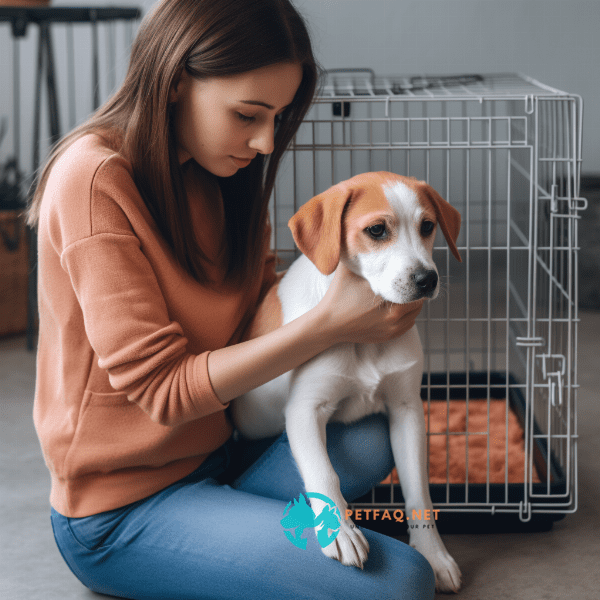
When to Gradually Phase Out the Crate: Transitioning to a New Sleeping Arrangement
As your puppy grows and becomes more comfortable in their new home, you may begin to wonder when it’s time to transition them away from the crate and into a new sleeping arrangement. While every puppy is different, there are some general guidelines you can follow to determine when it’s time to phase out the crate.
First, consider your puppy’s age and behavior. Puppies typically need to be crated for longer periods of time when they’re younger and still being potty trained. As your puppy gets older and more trustworthy, you may be able to leave them out of the crate for longer periods of time without any issues.
Next, consider your puppy’s behavior in the crate. If your puppy is consistently calm and relaxed while in the crate, it may be a sign that they’re ready to transition to a new sleeping arrangement. On the other hand, if your puppy is still exhibiting signs of anxiety or stress while in the crate, it may be best to continue crate training for a bit longer.
When you do decide to transition your puppy away from the crate, it’s important to do so gradually. Start by leaving the crate door open at night and allowing your puppy to explore their new sleeping arrangement on their own terms. Over time, you can gradually move the crate further away from your puppy’s sleeping area until it’s no longer needed.
Ultimately, the decision to phase out the crate will depend on your puppy’s individual needs and behavior. With patience and consistency, you can help your puppy to transition to a new sleeping arrangement that works well for both you and your furry companion.
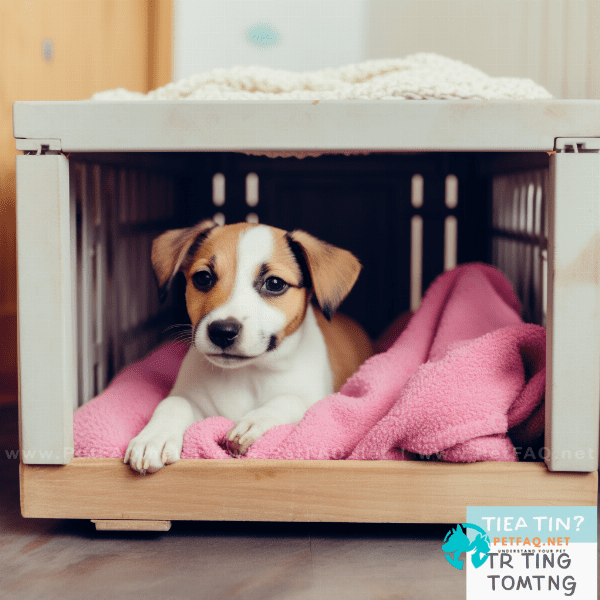
Frequently Asked Questions (FAQs) about Puppy crate training:
1. What should I do if my puppy cries or whines in the crate?2. How long can I leave my puppy in the crate?
3. Can I use crate training for potty training my puppy?
4. How do I wean my puppy off the crate once they are fully trained?
5. How can I prevent my puppy from developing negative associations with the crate?


